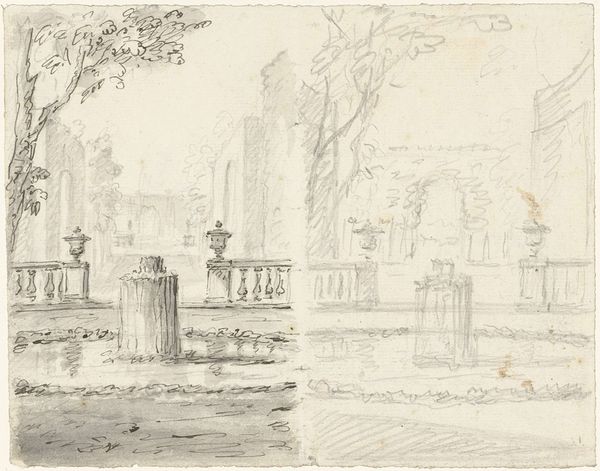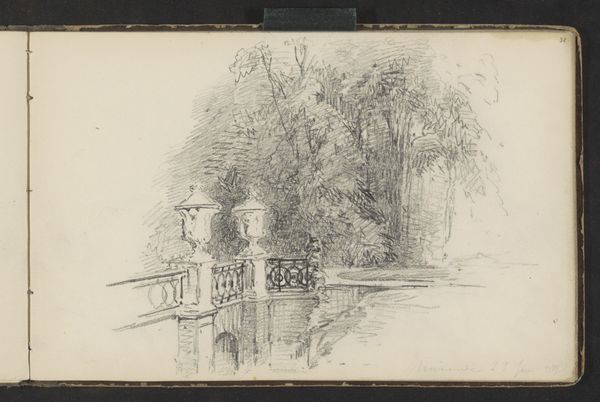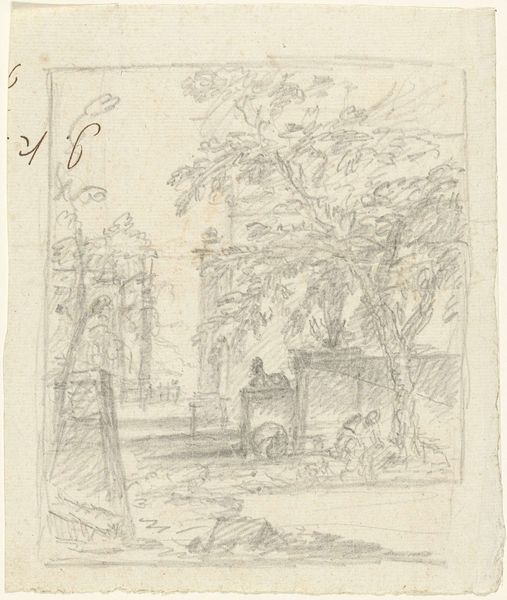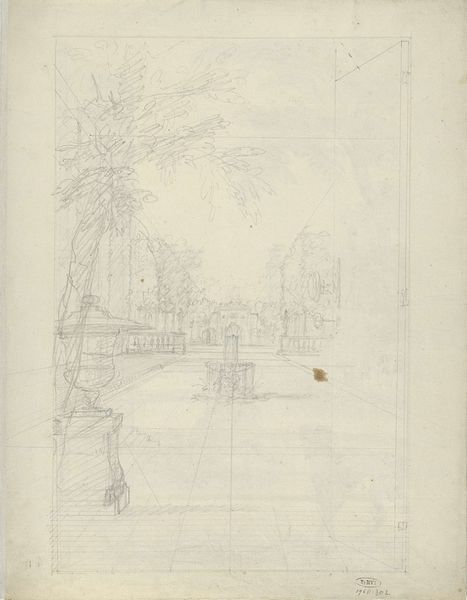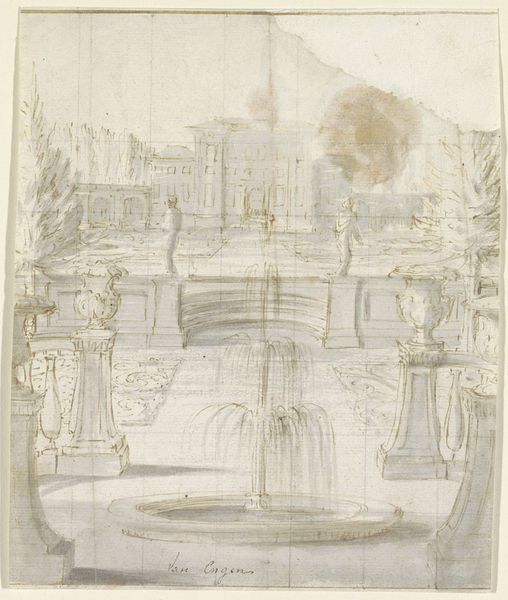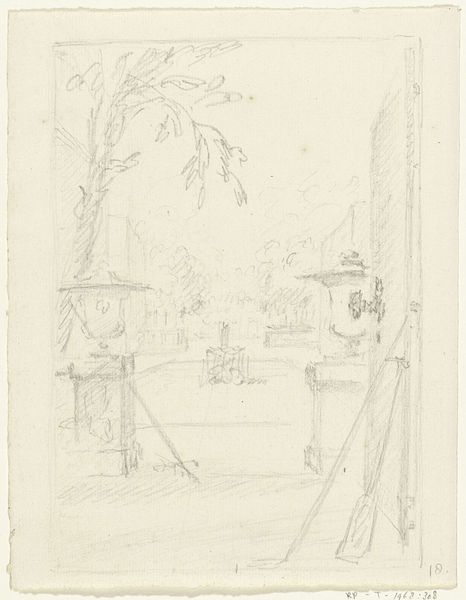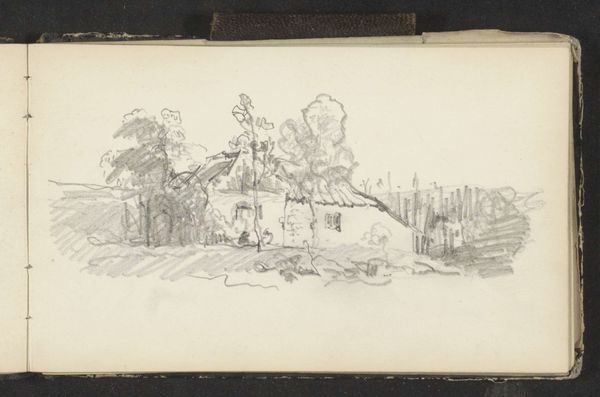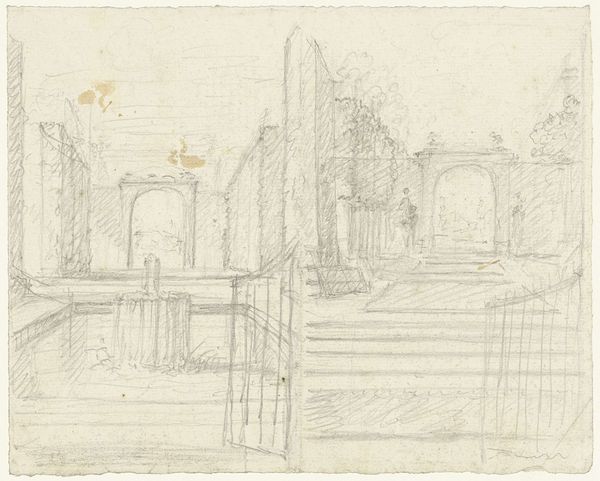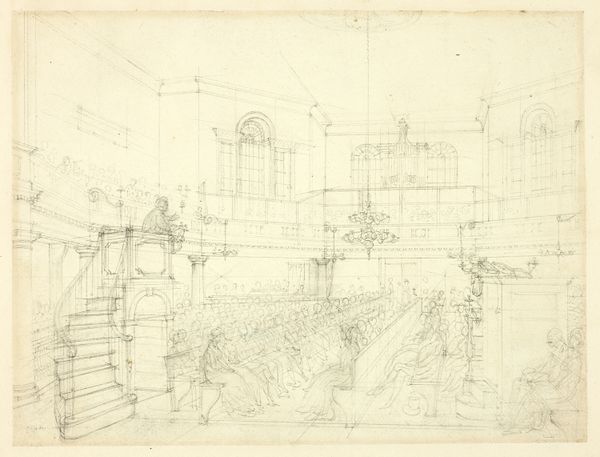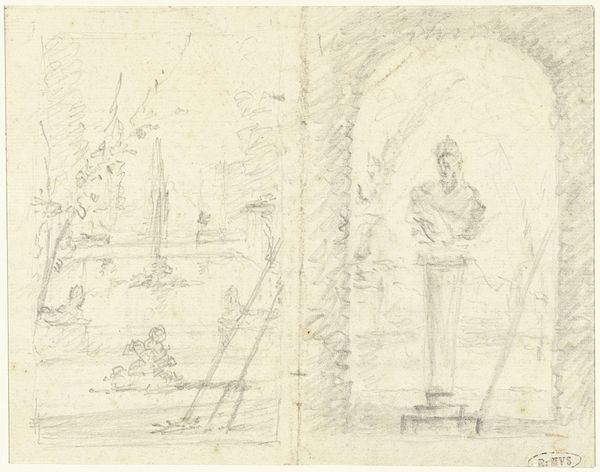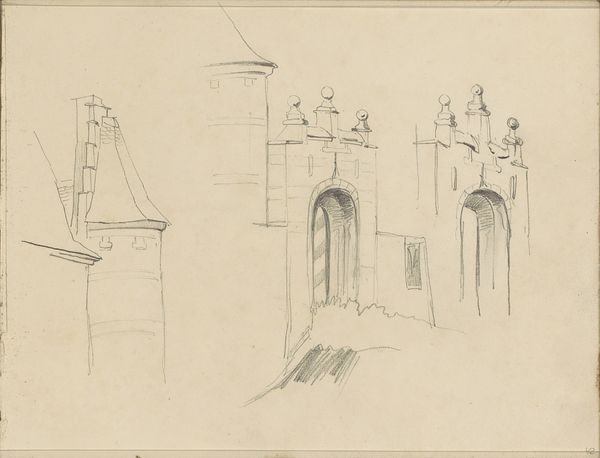
Twee ontwerpen voor een tuingezicht met fontein en tuingereedschap op de voorgrond 1715 - 1798
0:00
0:00
drawing, pencil
#
architectural sketch
#
landscape illustration sketch
#
drawing
#
garden
#
quirky sketch
#
baroque
#
mechanical pen drawing
#
pen sketch
#
landscape
#
perspective
#
personal sketchbook
#
sketchwork
#
pen-ink sketch
#
pencil
#
storyboard and sketchbook work
#
initial sketch
Dimensions: height 166 mm, width 207 mm
Copyright: Rijks Museum: Open Domain
Dionys van Nijmegen rendered these two garden designs with graphite, offering a glimpse into 18th-century aesthetics. The fountain, centrally located, represents more than mere decoration; it symbolizes life and purity. The inclusion of gardening tools in the foreground is intriguing. These humble objects might be linked to the ancient Roman concept of "genius loci," the protective spirit of a place. The arrangement evokes a tension between nature and artifice, echoing the formal gardens of Versailles, where nature is meticulously sculpted. The garden, a space carefully controlled, contrasts with the untamed wilderness, reflecting humanity's desire to dominate and cultivate nature. Think of how this symbol of control appears in medieval tapestries and Renaissance paintings. Gardens tap into our subconscious desire to tame the chaos of the world. It's a psychological refuge, mirrored across epochs, constantly evolving yet eternally rooted in our primal need for order and beauty.
Comments
No comments
Be the first to comment and join the conversation on the ultimate creative platform.
